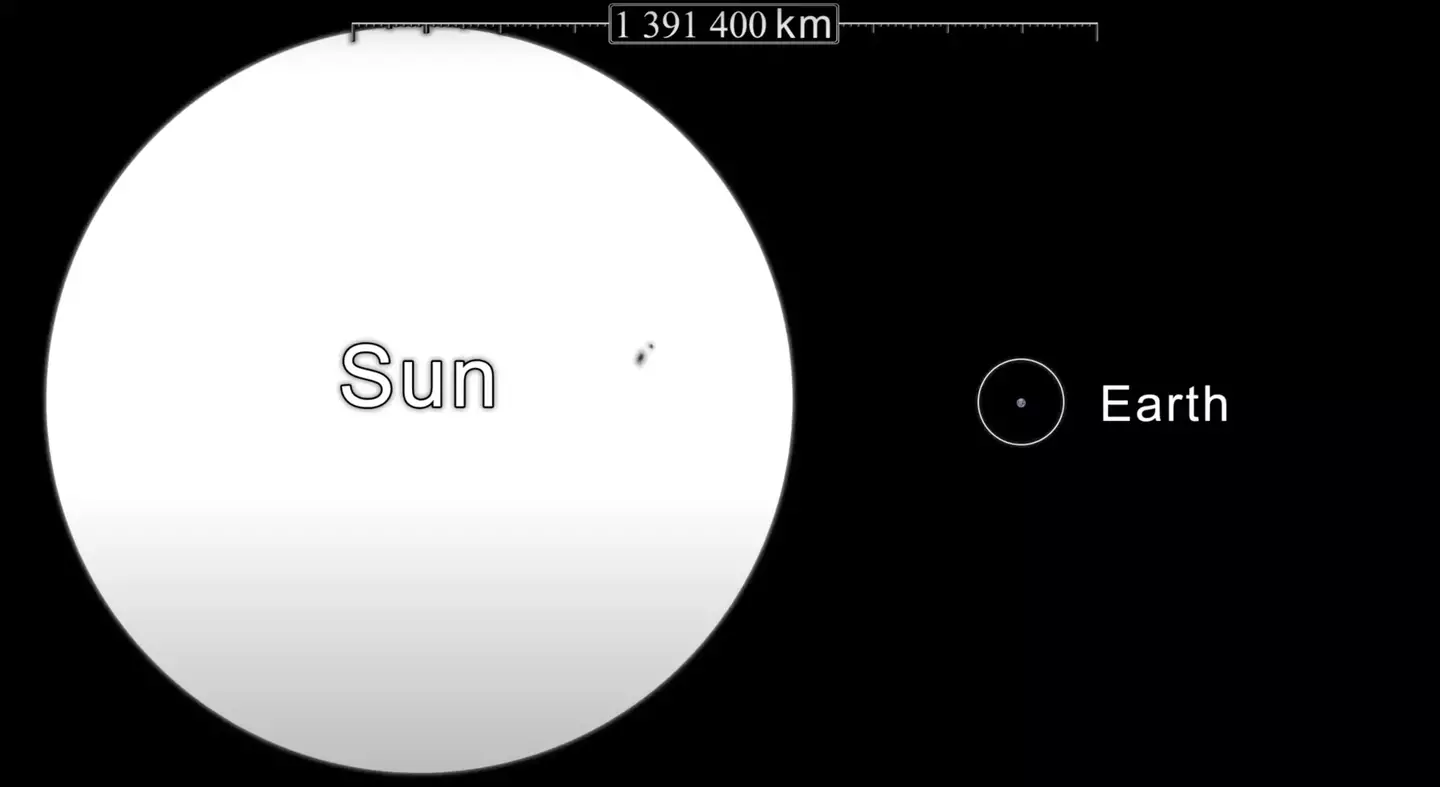
Catching a glimpse of the sun from Earth, which is 94,448,421 miles away, it can be easy to forget the sheer size of the star at the center of our solar system.
All eight planets in the system orbit around the sun but the magnitude of its size is something that is difficult to wrap our heads around and a clip shared on YouTube has only left people in disbelief.
The video, which was posted by Spacetime, starts off with an animation of Earth detailing how our planet is 12,756km (7926 miles) in diameter.
It then starts to zoom out, with Earth getting smaller and smaller until it’s just a speck on the screen.
The sun appears in the video and it is like a behemoth next to our tiny planet, with a diameter of 1,391,400km (864,576 miles).
Advert
For comparison, the sun is 1,303,533 times bigger than the Earth and it has seriously shocked viewers.
In fact, it’s so big that shoots of gas on the sun’s surface can actually reach heights of 6,214 miles.

Taking to the YouTube comment section, one user posted in response: “Absolutely mind boggling.”
Advert
A second added: “I don’t believe it . Ain’t no way the sun is that big.”
A third put our reality into perspective, writing: “A tiny speck orbiting an average star at the edge of a mundane galaxy.”
Despite being giant to us, the sun is actually only an average star in size and stars up to 100 times larger have been found by scientists.
Even still, the sun’s activity can impact the Earth and, as it’s on the verge of hitting a huge 11-year peak where its magnetic field flips, there will be an explosive amount of activity.
Advert

The surge has resulted in solar storms and made the northern and southern lights visible in places where they are not usually spotted so easily.
It’s also predicted that the sun’s death will be what causes the end of the world and another YouTube video detailed how the sun will eventually increase its luminosity, causing all plant life to die and the oceans to evaporate.
The Earth will eventually be destroyed by our dying sun which will become a white dwarf, which is the stellar core that is left of a dying star.
Advert
The power of the sun is not to be underestimated but we still have 233 million years before the explosion so for now, we can focus on hoping to catch a few rays this summer.